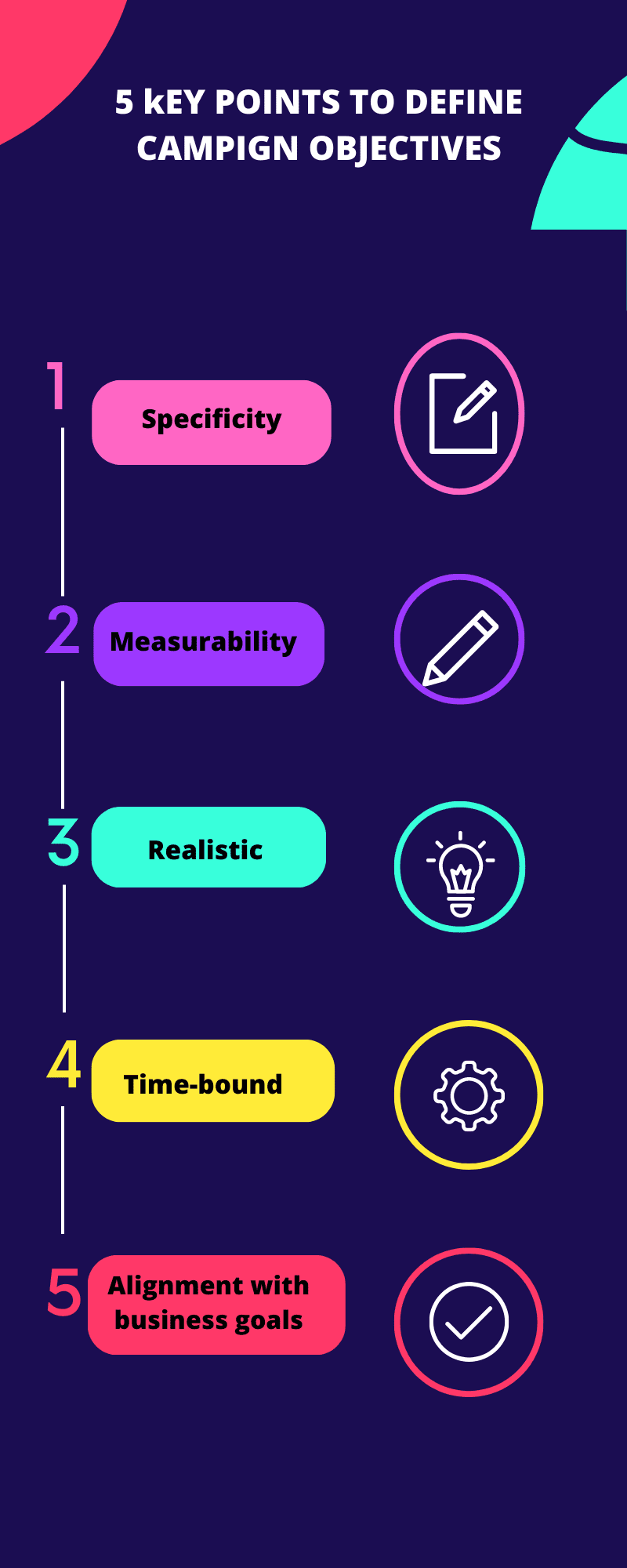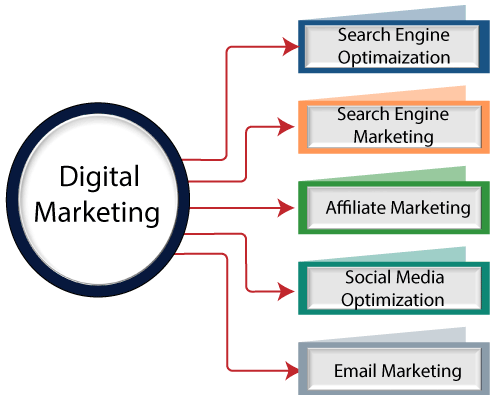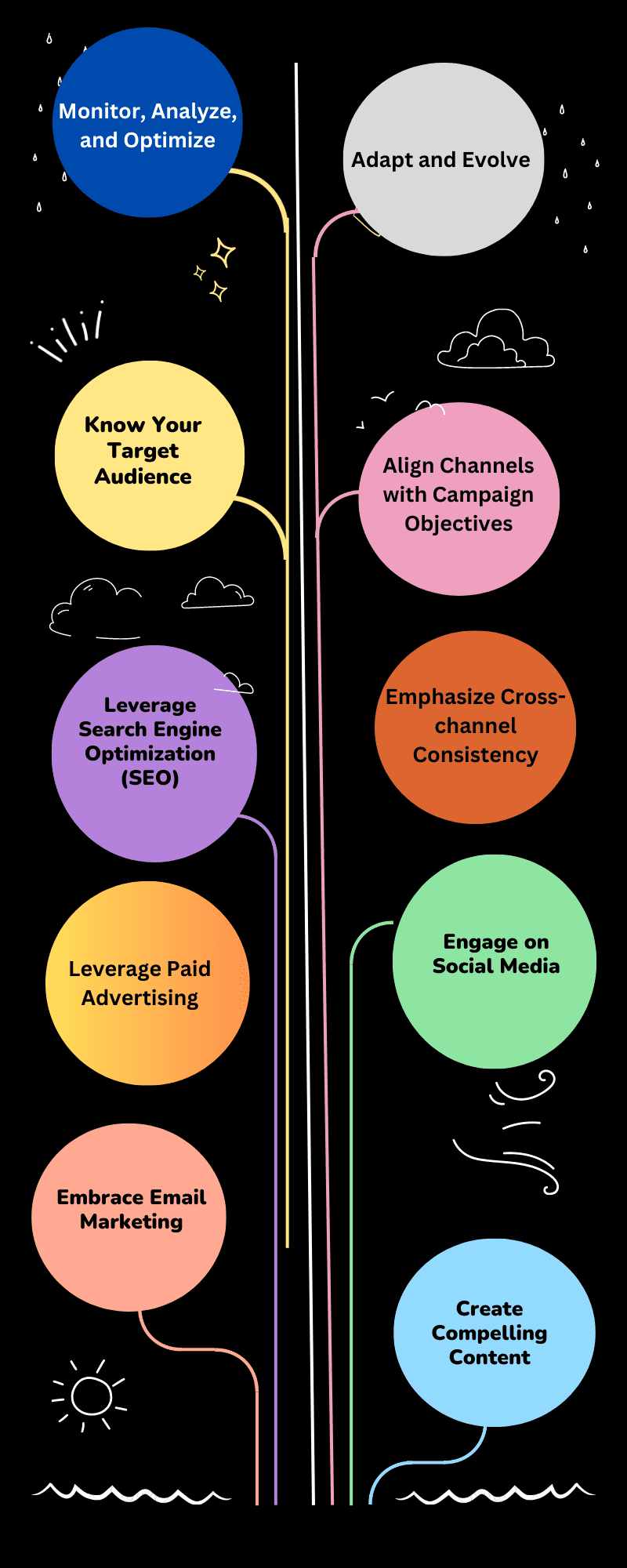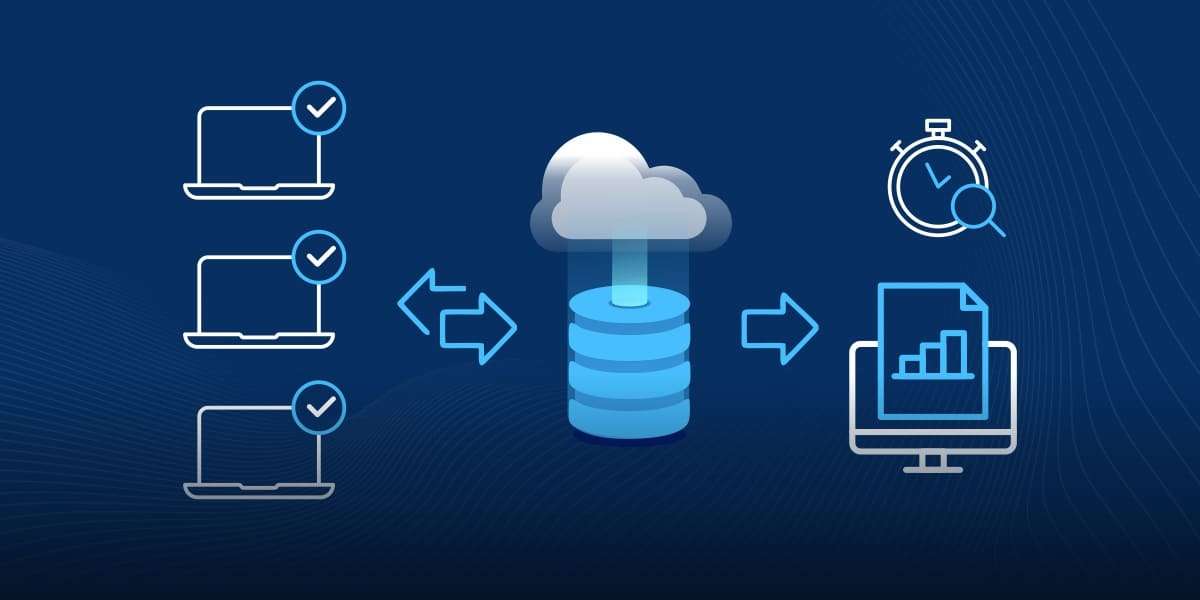Last updated on June 30th, 2024 at 07:37 pm
Table of Contents
ToggleThe Ultimate Guide to Building a Winning Digital Marketing Strategy

In today’s digital age, businesses need to establish a strong online presence to thrive and grow. A well-executed digital marketing campaign can be the key to reaching and engaging with your target audience, generating leads, and increasing conversions.
However, creating a successful digital marketing campaign requires careful planning, strategic thinking, and continuous optimization.

In this blog post, we will guide you through the essential steps to create a winning digital marketing campaign that drives results and maximizes your return on investment.
Define Your Campaign Objectives
Defining clear and measurable campaign objectives is a crucial first step in creating a successful digital marketing campaign. Your objectives serve as the guiding force behind your strategy and help you stay focused on what you want to achieve.
Here are key points to consider when defining your campaign objectives:
Specificity:
Ensure that your objectives are specific and well-defined. Instead of a vague goal like “increase website traffic,” specify the desired outcome, such as “increase website traffic by 20% within three months.”
Measurability:
Your objectives should be measurable, allowing you to track and evaluate progress. Use quantifiable metrics like website visits, conversions, leads generated, or sales revenue.
Realistic:
Set objectives that are attainable based on your resources, industry, and target audience. Unrealistic goals can lead to frustration and disappointment.
Time-bound:
Establish a timeline for achieving your objectives. This adds a sense of urgency and helps prioritize tasks and allocate resources effectively.
Alignment with business goals:
Ensure that your campaign objectives align with your overall business goals. Whether it’s increasing brand awareness, expanding market reach, or boosting sales, your campaign objectives should contribute to the broader organizational objectives.

Know Your Target Audience
Understanding your target audience is essential for creating a successful digital marketing campaign. Conduct market research to identify your audience’s demographics, interests, behaviors, and pain points. Use tools like Google Analytics and social media insights to gain valuable data and insights.With this information, you can create buyer personas that will guide your campaign’s messaging, content creation, and channel selection.
To gain insights into your target audience, follow these steps:
Conduct Market Research:
Use surveys, interviews, focus groups, and online research to gather information about your audience. Explore demographics, such as age, gender, location, income, and occupation, as well as psychographics, including interests, hobbies, values, and lifestyle choices.
Analyze Existing Data:
Utilize tools like Google Analytics, social media analytics, and customer relationship management (CRM) systems to gather data on website visitors, social media followers, and existing customers. Analyze this data to identify patterns and trends in user behavior.
Create Buyer Personas:
Develop detailed profiles of your ideal customers based on the collected data. Include information like age, gender, job title, goals, challenges, and preferred communication channels. These personas help you visualize and understand your audience better.
Monitor Online Conversations:
Pay attention to online discussions, comments, and reviews related to your industry, products, or services. Social listening tools can help you identify trends, sentiment, and common pain points among your audience.
Test and Refine:
Continuously test and refine your understanding of your target audience. Analyze campaign performance metrics and gather feedback to make data-driven adjustments and optimize your messaging, targeting, and content.
Craft a Compelling Message
Crafting a compelling message is essential to capture your audience’s attention and make them take action. Here’s how you can create a message that resonates with your target audience:
Understand Your Audience:
Begin by thoroughly understanding your target audience’s needs, desires, pain points, and motivations. Conduct market research, analyze customer data, and create buyer personas to gain insights into their preferences and behaviors. This understanding will help you tailor your message to address their specific needs.
Unique Value Proposition (UVP):
Clearly define your unique value proposition—the unique benefit or advantage that sets your brand apart from the competition. Your UVP should communicate why your product or service is valuable and why your audience should choose you over alternatives. Focus on the outcomes, benefits, and solutions your brand offers.
Emotional Appeal:
Tap into the emotions of your audience to create a deeper connection. Emotionally resonant messages are more likely to grab attention and drive action. Understand the emotional triggers that drive your audience, such as fear, joy, pride, or desire, and incorporate them into your message. Show how your brand can fulfill their emotional needs or alleviate their pain points.
Clear and Concise Language:
Use clear and concise language to communicate your message effectively. Avoid jargon or technical terms that might confuse or alienate your audience. Break down complex concepts into simple and understandable terms. Focus on delivering a message that is easy to grasp and memorable.
Address Pain Points and Provide Solutions:
Highlight the pain points or challenges your audience faces and demonstrate how your product or service can provide solutions. Position your brand as the answer to their problems and explain how it can make their lives easier, better, or more enjoyable. Show empathy and understanding towards their challenges.
Call to Action (CTA):
End your message with a clear and compelling call to action. Prompt your audience to take the desired action, whether it’s making a purchase, signing up for a newsletter, or contacting your business. Use action-oriented language and create a sense of urgency or exclusivity to motivate them to act immediately.
Select the Right Digital Channels

When creating a digital marketing campaign, selecting the right digital channels is crucial for reaching your target audience effectively. Here are some key considerations to help you choose the most appropriate channels for your campaign
Define Your Target Audience:
Start by understanding your target audience’s preferences, behaviors, and online habits. Are they active on social media? Do they frequently search for information on search engines? Knowing this will guide your channel selection process.
Set Clear Objectives:
Align your channel selection with your campaign objectives. For example, if your goal is to increase brand awareness, channels like social media and content marketing may be suitable. If you aim to generate leads, email marketing or search engine advertising could be effective.
Consider Your Budget:
Evaluate your budget and determine which channels align with your financial resources. Some channels, such as paid advertising, may require a higher investment, while others like social media can be more cost-effective.
Leverage Search Engine Optimization (SEO):
Enhance your website’s visibility in search engine results by optimizing your content and website structure. SEO is beneficial for long-term organic traffic and is essential for any digital marketing campaign.
Utilize Social Media:
Consider the platforms that your target audience uses most frequently. Facebook, Instagram, Twitter, LinkedIn, and YouTube are popular choices, but choose those that align with your audience demographics and interests.
Explore Pay-per-Click (PPC) Advertising:
PPC allows you to display ads on search engine result pages or other websites, paying only when users click on your ads. Google Ads and Bing Ads are common PPC platforms.
Email Marketing:
If you have an established customer base or a mailing list, email marketing can be a powerful channel for nurturing leads, building customer loyalty, and driving conversions.
Content Marketing and Blogging:
Publish high-quality content on your blog or other platforms to attract and engage your audience. Content marketing helps establish your brand as a thought leader and provides valuable information to your target audience.
Influencer Marketing:
Collaborate with influencers in your industry who have a significant online following. Their endorsements can help you reach a wider audience and build trust with potential customers.
Analyze Competitors:
Research your competitors to see which channels they are using successfully. While you should have a unique strategy, understanding their approach can provide insights and help you identify potential gaps or opportunities.

Develop a Multi-channel Strategy
In today's digital landscape, consumers engage with brands across various online platforms. To create a successful digital marketing campaign, it's essential to develop a multi-channel strategy that leverages different channels to maximize your reach, engagement, and conversions.
Create Engaging Content
Creating engaging content is crucial for capturing your audience’s attention and driving the success of your digital marketing campaign.
Here are some key strategies to consider when crafting compelling and engaging content:
Understand Your Audience:
To create content that resonates with your audience, you must have a deep understanding of their needs, preferences, and pain points. Conduct thorough research and develop buyer personas to gain insights into their demographics, motivations, and interests. Tailor your content to address their specific challenges and provide valuable solutions.
Tell Stories:
Stories have a unique power to captivate and connect with people emotionally. Incorporate storytelling elements into your content to make it more relatable and memorable. Share real-life examples, case studies, or customer success stories that demonstrate the impact of your products or services. Engaging narratives can evoke emotions and inspire action.
Use Visuals:
Visual content is highly engaging and can enhance the overall appeal of your digital marketing campaign. Incorporate relevant images, infographics, videos, and other visual elements to support your message. Visuals break up text, make complex information easier to understand, and increase shareability across social media platforms.
Focus on Authenticity:
Consumers value authenticity and genuine interactions. Be transparent and honest in your content, showcasing the real people behind your brand. Avoid overly promotional language and instead, focus on building trust and credibility. Authenticity fosters stronger connections with your audience and encourages engagement.
Incorporate Interactive Elements:
Interactive content encourages active participation from your audience, increasing engagement and time spent on your website or platforms. Consider using quizzes, polls, surveys, interactive infographics, or calculators to create an immersive experience. Interactive elements make your content more memorable and shareable.
Incorporate User-Generated Content (UGC):
User-generated content, such as customer reviews, testimonials, and social media posts, can be highly impactful in building trust and engagement. Encourage your audience to share their experiences and opinions about your brand. Highlight UGC in your content to showcase social proof and foster a sense of community.
Optimize for Readability:
Make your content easy to read and scan by using clear headings, subheadings, bullet points, and short paragraphs. Use concise and straightforward language, avoiding jargon or complex terminology. Break up the text with visual elements to maintain a visually appealing and user-friendly format.
Encourage Engagement and Conversation:
Prompt your audience to engage with your content by asking questions, inviting comments, or encouraging social sharing. Respond promptly to comments and messages, fostering a sense of dialogue and community. Encouraging conversation builds engagement and loyalty among your audience.
Provide Value and Educational Content:
Your content should provide value and solve problems for your audience. Offer practical tips, tutorials, guides, or educational content that helps your audience overcome challenges or achieve their goals. Valuable content positions your brand as a trusted resource, leading to increased engagement and loyalty.
Continuously Measure and Optimize:
Track the performance of your content using analytics tools. Identify which types of content and topics resonate most with your audience. Based on data-driven insights, refine your content strategy, and optimize future campaigns for even better engagement.
In any successful digital marketing campaign, monitoring, analyzing, and optimizing play a crucial role in maximizing results and improving overall performance.

Monitor
Monitoring your campaign involves keeping a close eye on key performance indicators (KPIs) and tracking relevant metrics. Use tools like Google Analytics, social media insights, and email marketing analytics to gather data on website traffic, conversions, engagement, click-through rates, and other important metrics specific to your campaign goals. Regular monitoring allows you to identify trends, spot issues early on, and make informed decisions.

Analyze
Once you have collected data, it's time to analyze it to gain valuable insights. Look for patterns, trends, and correlations to understand how your campaign is performing. Identify strengths, weaknesses, and areas of improvement. Analyze data across different channels to identify the most effective strategies and allocate resources accordingly. This analysis helps you understand customer behavior, preferences, and the effectiveness of your messaging and tactics.

Optimize
Optimization is the process of making data-driven adjustments to improve the effectiveness and efficiency of your digital marketing campaign. Based on your analysis, identify areas that need improvement. It could be tweaking your ad copy, refining your targeting, adjusting your bidding strategy, or modifying your landing pages. Test different variations and approaches to see what resonates best with your audience. Continuously optimize your campaign elements to maximize results.
Continuous Improvement
Digital marketing campaigns should be viewed as an iterative process. Continuously monitor, analyze, and optimize based on the insights you gather. Set up regular reporting and review sessions to assess progress and make data-driven decisions. Implement feedback loops between different teams involved in the campaign to ensure effective communication and collaboration. By constantly learning from data and refining your strategies, you can achieve ongoing improvement and better campaign performance.
Creating a successful digital marketing campaign requires careful planning, audience understanding, and continuous optimization. By setting clear objectives, crafting a compelling message, selecting the right channels, and leveraging engaging content, you can reach and engage your target audience effectively. Remember to monitor, analyze, and optimize your campaign based on data-driven insights. With a strategic and iterative approach, you can create a digital marketing campaign that drives results and helps your business thrive in the digital landscape.

Born with a relentless thirst for knowledge, I ventured into academia, mastering the art of PHD thesis and dissertation writing. Fuelled by curiosity, I embraced digital marketing, deciphering its nuances to become an expert in SEO, content strategies, and social media management. Alongside, I delved into the intricacies of nursing assignments, leveraging my multidisciplinary insights to assist students. Each endeavor shaped my journey, blending scholarly pursuits with practical applications.
